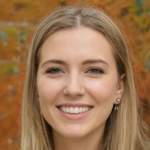How To Calculate Operating Cash Flow
Operating Cash Flow or OCF is determined by the amount of cash that a company generates during the regular operating period. OCF starts with net income that is taken from the bottom section of an income statement and adds on any non-cash items, making relevant adjustments within the net working capital. All of this culminates in the total cash amount that has been generated within a specific period of time.
Whenever a company performs financial analysis, the cash flow is determined in conjunction with any net income. The company will also use the free cash flow alongside other metrics to thoroughly assess the company’s overall performance and financial sustainability.
A consolidated cash flow is often organized into three specified sections. Operative activities are usually included at the top, followed by investment activities in the middle and financing activities at the bottom. Additionally to these three distinctive sections, a statement may also present a starting cash balance, the totalled changes for the specified period and finally, an ending balance.

Also read: Make Money While In College
The operating section works in the following ways:
-
Net income from the very bottom of the income statement is usually used a the starting place.
-
Any non-cash items are then added back to the overall figure, meaning that accruals are reversed. These accruals include depreciation, which is the accounting method that is used for property expenses and equipment expenditures. They also include any stock-based compensation that has not been paid out using cash, deferred taxes that have arisen from the different accounting methods that have been used during the filing process and other expenses or income like losses or unrealized gains.
-
Changes in working capital are also included. These adjustments normally include whenever an inventory on a balance sheet has risen which results in an inherent reduction in cash. Other changes include an increase in your accounts receivable turnover ratio, indicating a longer average collection period for your credit and resulting in reduced cash flow. Finally, accounts payable and unearned revenue may cause an increase in cash which requires the relevant adjustments to working capital.
At the bottom of this section, you will see a total that is labeled as “net cash provided by operating activities”. This line comprises all of the included items listed above and culminates as the total for this period of time.
Also read: Is Debt Management Important?
Formula For Operating Cash Flow
Whether you are a financial analyst, a private investor, or an accountant, it is crucial to know how to accurately calculate the specific cash flow that has been generated by a business within any given period. The introduction of modern technology into accounting means that we can often take for granted the number of steps that are involved within the calculative process.
The formula for generating the operating cash flow is as follows:
-
Operating Cash Flow = Non-Cash Expenses + Net Income - Increase In Working Capital. (Short Form).
This formula provides you with a clear indication of how to calculate this by yourself. However, it is not totally exhaustive as additional non-cash items and other changes in liabilities/assets may cause an impact on the overall sum. The key to ensuring that you record your calculations accurately is to make sure that every single item has been accounted for. The ability to do this accurately will vary greatly depending on the type of company that is operating.
Also read: Budget For A Small Business

Net Income Vs Operating Cash Flow
Earnings Per Share and Net Income are two commonly used financial metrics. However, these metrics differ from the operating cash flow. The key differences arise from the specified accounting rules that indicate the matching principle alongside the accrual principle that should be adhered to when preparing your statements. The net income ultimately involves all manner of expenses that have or haven’t been paid for.
Additionally, the company’s specific revenue recognition principles and manner of matching its expenses to the timing of its revenues may result in material differences occurring between the operating cash flow and the overall net income. It is not always possible to determine which number will be lower or higher than the other. However, on several occasions, the OCF has ended up being higher than the net income. But the opposite is also true.
Also read: What Does A Controller Do?
Conclusion
To conclude, you can calculate the operating cash flow by using the formula that I have outlined above. This typically involves adding the net income and non-cash expenses together before misusing any increases in working capital. However, you may need to account for other changes in liabilities that could impact the total sum of your OCF.
If you are struggling to calculate your operating cash flow using this short-form formula, then you should contact an account who will be more than happy to assist you in this process. It is imperative that you are calculating your operating cash flow correctly, in order to avoid any potential shortfalls or issues when presenting your finished financial statement.
Using this formula will also give you an enhanced indication of how much money you have been able to generate within a given period of time. It is important to remain on top of your company’s financial arrangements in order to account for any assets/liabilities that will need to be included in the overall formula. You should also account for any changes in working capital that will need to be included in your financial statement.
Above all, keeping a record of all of your operating activities within a specified period of time is the easiest way to ensure that you do not miss a beat when recording your operating cash flow. It is incredibly difficult to look through days of transactions in order to determine how much money your company has generated in a specific period of time.
Whilst most companies will now use enhanced computerized technology to assist them in this process, it is still good to know how to make these calculations manually, especially with regard to any adjustments that you may need to make to your overall totals.
If you haven't got the most efficient way to produce pay stubs, then check out our pay stub maker today. So simple and convenient!
Also read: Pay Yourself When You Have An LLC
















